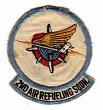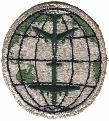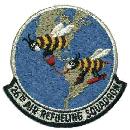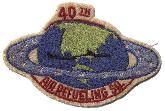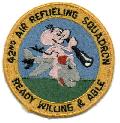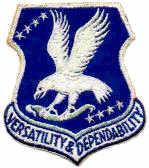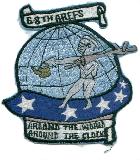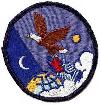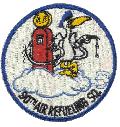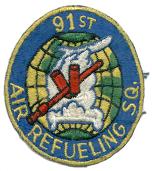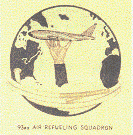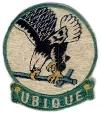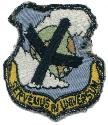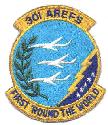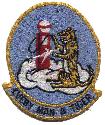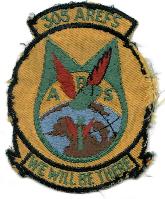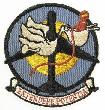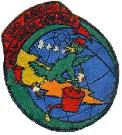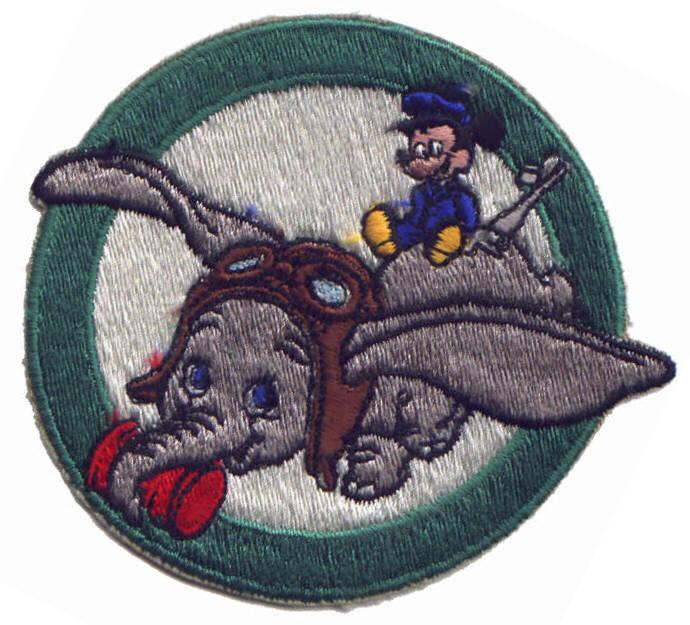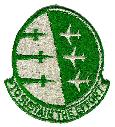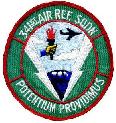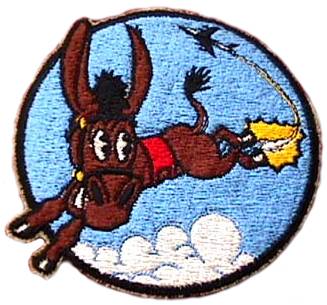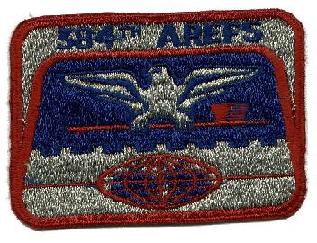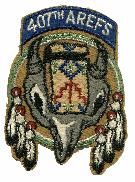9th Bombardment Wing
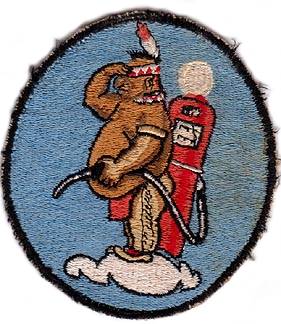
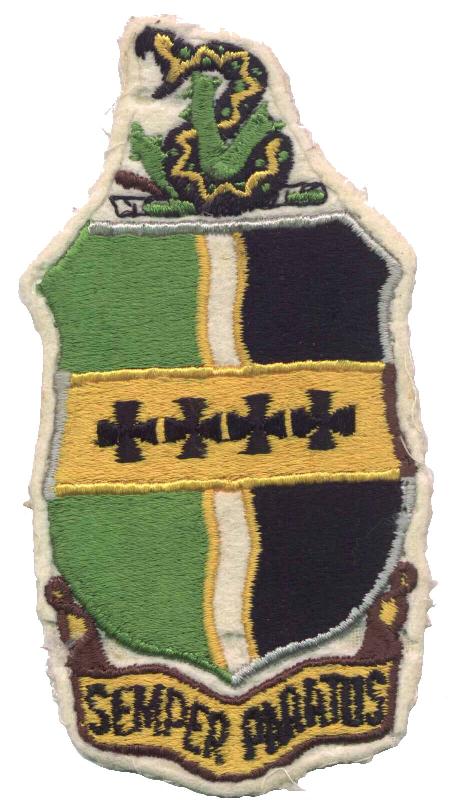
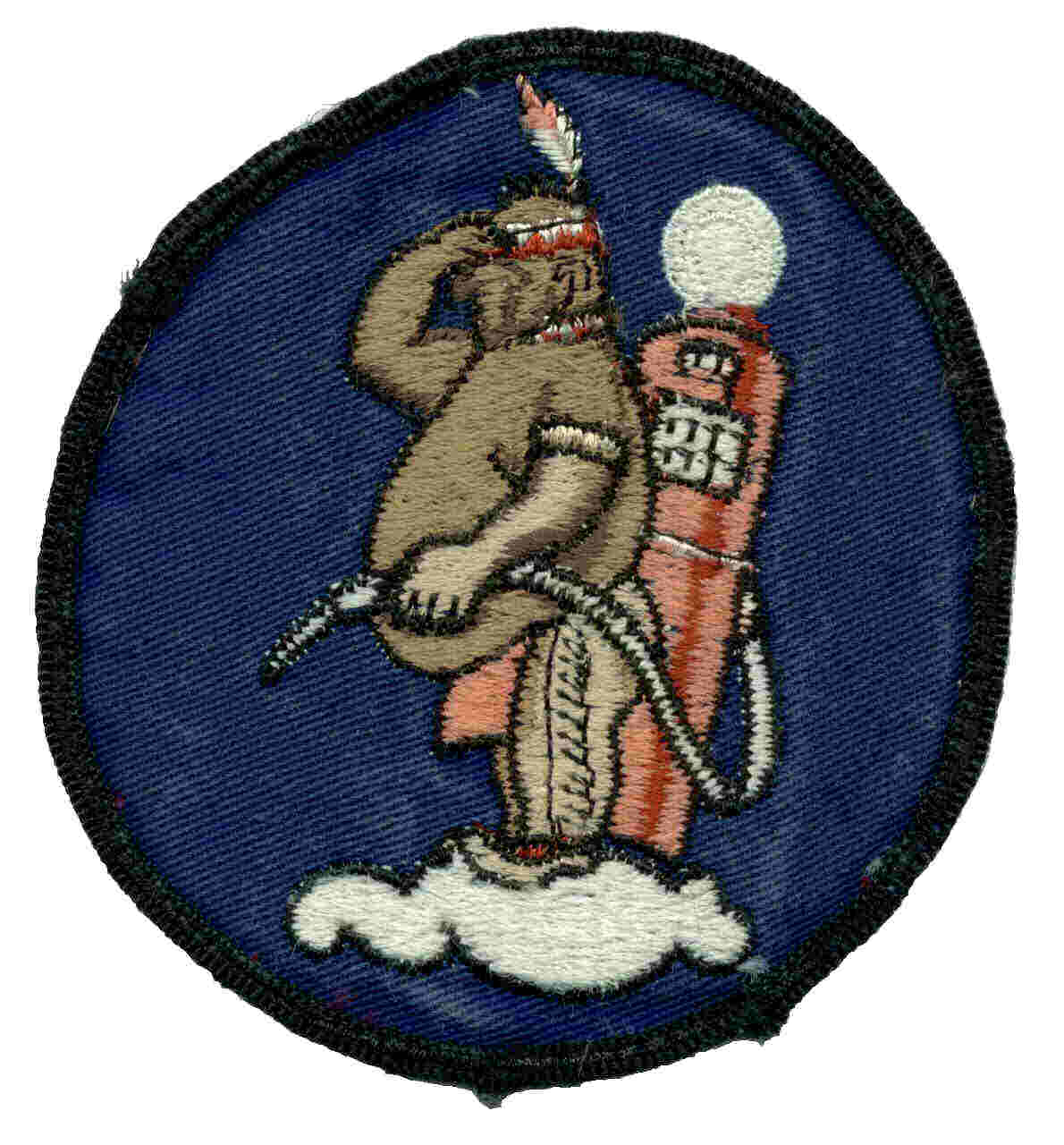
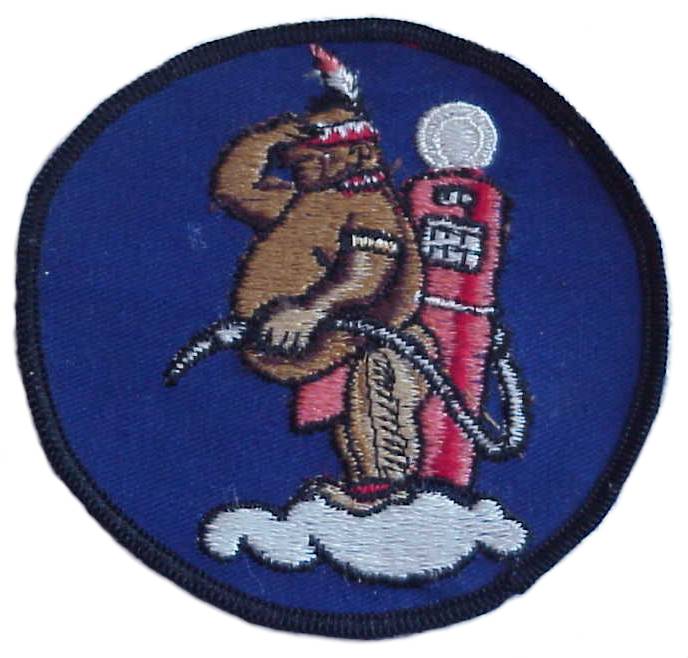
____________________________________________________________________
KB-29M (aircraft and people from 307th AREFS)
Davis-Monthan AFB, Arizona
9th Bombardment Group (Medium)
1 Aug 1951-16 Jun 1952
KB-29M
Davis-Monthan AFB, Arizona
9th Bombardment Wing
16 Jun 1952-1 May 1953
KB-29M
Mountain Home AFB, Idaho
9th Bombardment Wing (Medium)
1 May 1953-15 Sep 1954
KC-97G
Mountain Home AFB, Idaho
9th Bombardment Wing (Medium)
15 Sep 1954-15 Dec 1965
(Deployed to Benguerir AB, French Morocco, 18 Apr-16 Jul 1955; Elmendorf AFB, Alaska, 2 May-1 Jul 1956))
KC-135Q
Beale AFB, California
456th Bombardment Wing (Heavy)
01 Jan 1970-30 Sep 1975
KC-135Q
Beale AFB, California
17th Bombardment Wing (Heavy)
30 Sep 1975-30 Sep 1976
KC-135Q
Beale AFB, California
100th Air Refueling Wing (Heavy)
30 Sep 1976-27 Jan 1982
KC-10A
March AFB, California
22nd Bombardment (later, Air Refueling) Wing
1 Aug 1982-1 Sep 1991
KC-10A
March AFB, California
22nd Operations Group
1 Sep 1991-1 Jan 1994
KC-10A
March AFB, California
722nd Operations Group
1 Jan 1994-1 Sep 1994
KC-10A
Travis AFB, California
60th Air Moblity Wing
1 Sep 1994-Present
____________________________________________________________________
9th AREFS KC-97G Tail Numbers
53-0121
53-0122
53-0124
53-0125
53-0126
53-0127
53-0128
53-0129
53-0130
53-0351
53-0352
53-0353
53-0354
53-0355
53-0356
53-0357
53-0358
53-0359
53-0360
No others known
____________________________________________________________________
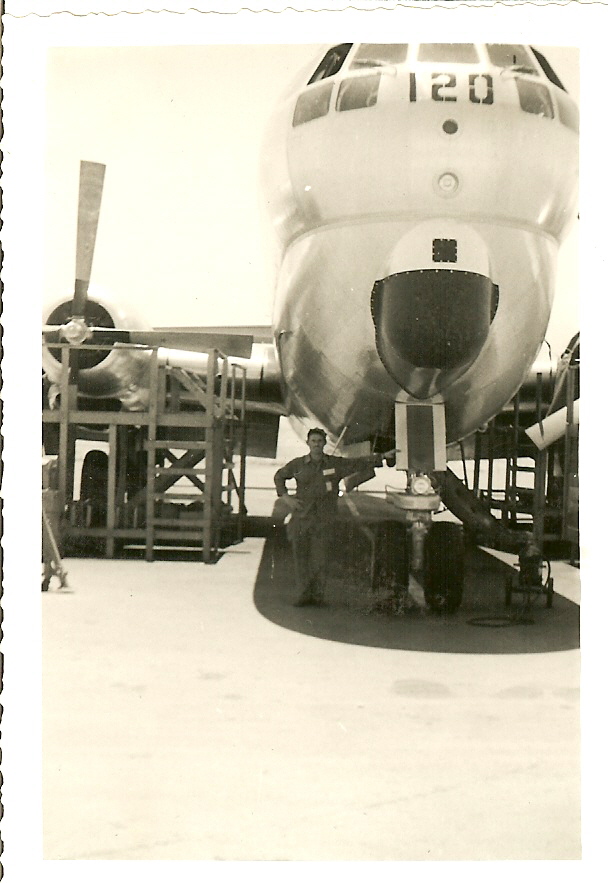 Charles Cassinelli in front of his 9th AREFS KC-97G 53-0120 at Mountain Home AFB, Idaho.
He was there from August 1953 to June 1960. - Courtesy of Charles Cassinelli.
Charles Cassinelli in front of his 9th AREFS KC-97G 53-0120 at Mountain Home AFB, Idaho.
He was there from August 1953 to June 1960. - Courtesy of Charles Cassinelli.
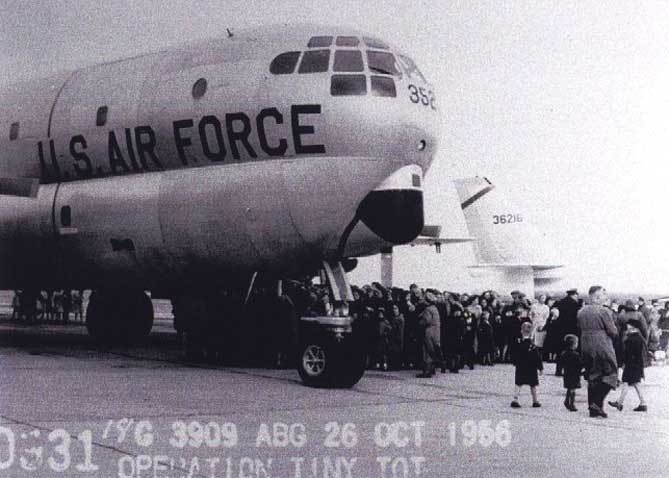 9th AREFS KC-97G 53-0352 at Greenham Common AB, England 26 Oct56 for Operation Tiny Tot.
9th AREFS KC-97G 53-0352 at Greenham Common AB, England 26 Oct56 for Operation Tiny Tot.
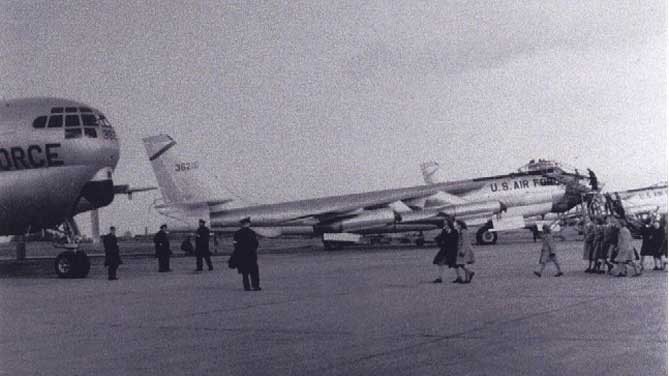 9th AREFS KC-97G 53-0352 at Greenham Common AB, England 26 Oct56 for Operation Tiny Tot.
9th AREFS KC-97G 53-0352 at Greenham Common AB, England 26 Oct56 for Operation Tiny Tot.
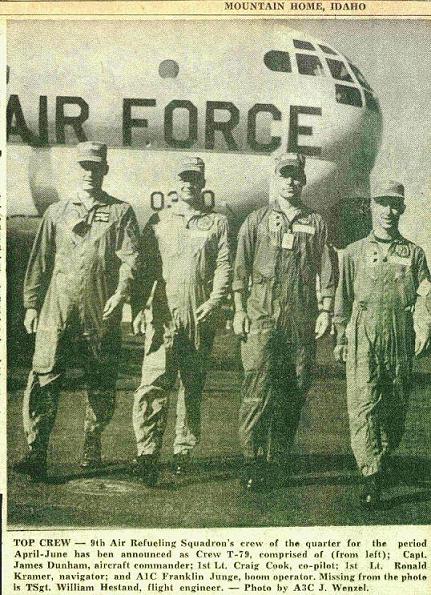 9th Air Refueling Squadron's crew of the quarter in front of their KC-97G 53-0360 on the Mountain Home AFB, Idaho flightline.
- Courtesy of Boom Operator Frank Junge.
9th Air Refueling Squadron's crew of the quarter in front of their KC-97G 53-0360 on the Mountain Home AFB, Idaho flightline.
- Courtesy of Boom Operator Frank Junge.
 9th Air Refueling Squadron coffee mug with the name Ingmire painted on the other side.
9th Air Refueling Squadron coffee mug with the name Ingmire painted on the other side.
____________________________________________________________________
9th Air Refueling Squadron's History
Constituted 9th Photographic Squadron on 19 Jan 1942. Activated on 1 Feb 1942. Redesignated: 9th Photographic Reconnaissance Squadron on 9 Jun 1942; 9th Photographic Squadron (Light) on 6 Feb 1943; 9th Photographic Reconnaissance Squadron on 13 Nov 1943. Inactivated on 4 Dec 1945. Consolidated (19 Sep 1985) with the 9th Air Refueling Squadron, Medium, which was constituted on 24 Jul 1951. Activated on 1 Aug 1951. Discontinued, and inactivated, on 15 Dec 1965. Redesignated 9th Air Refueling Squadron, Heavy, on 12 Dec 1969. Activated on 1 Jan 1970. Inactivated on 27 Jan 1982. Activated on 1 Aug 1982. Redesignated 9th Air Refueling Squadron on 1 Sep 1991.
Assignments
First Air Force, 1 Feb 1942; Tenth Air Force, 29 Mar 1942 (flight attached to Fourteenth Air Force, 10 Mar�12 Jul 1943); Army Air Forces, India-Burma Sector, 30 Oct 1943 (attached to 5306th Photographic and Reconnaissance Group [Provisional], 30 Oct 1943�17 Jan 1944, and to Tenth Air Force, 17 Jan�6 Mar 1944); Tenth Air Force, 7 Mar 1944; 8th Photographic (later, 8th Reconnaissance) Group, 25 Apr 1944; Army Air Forces, India-Burma Theater, c. Oct�4 Dec 1945. 9th Bombardment Group, 1 Aug 1951 (attached to 43d Bombardment Wing, 1 Aug�3 Sep 1951; 36th Air Division, 4 Sep 1951�14 Jan 1952; 303d Bombardment Wing, 15 Jan 1952�); 9th Bombardment (later, 9th Strategic Aerospace) Wing, 16 Jun 1952�15 Dec 1965 (remained attached to 303d Bombardment Wing, to 30 Apr 1953; attached to 5th Air Division, 18 Apr�16 Jul 1955; SAC Liaison Team, 2 May�1 Jul 1956). 456th Strategic Aerospace (later, 456th Bombardment) Wing, 1 Jan 1970; 17th Bombardment Wing, 30 Sep 1975; 100th Air Refueling Wing, 30 Sep 1976�27 Jan 1982. 22d Bombardment (later, 22d Air Refueling) Wing, 1 Aug 1982; 22d Operations Group, 1 Sep 1991; 722d Operations Group, 1 Jan 1994; 60th Operations Group, 1 Sep 1994�.
Stations
Mitchel Field, NY, 1 Feb 1942; Bradley Field, CT, 10 Mar 1942; Felts Field, WA, 16 Apr�18 May 1942; Karachi, India, 24 Jul 1942 (flight at Kunming, China, Nov 1942�12 Jul 1943, with detachment thereof operating from Kweilin, China, c. Feb�12 Jul 1943); Chakulia, India, 30 Nov 1942 (detachment operated from Dinjan, India, 18 Mar�Jul 1943); Pandaveswar, India, 3 Jan 1943 (detachment operated from Dinjan, India, c. Sep 1943�20 May 1944); Barrackpore, India, 29 Oct 1943 (detachment operated from Tingkawk Sakan, Burma, 16 Aug�30 Nov 1944, and from Myitkyina, Burma, 27 Nov�c. 5 Dec 1944; another detachment operated from Chittagong, India, c. 9 Oct�21 Dec 1944); Myitkyina, Burma, c. 5 Dec 1944; Piardoba, India, c. 1 May 1945; Malir, India, c. Oct�c. 14 Nov 1945; Camp Kilmer, NJ, 3�4 Dec 1945. Davis-Monthan AFB, AZ, 1 Aug 1951; Mountain Home AFB, ID, 1 May 1953�15 Dec 1965 (deployed at Benguerir AB, French Morocco, 18 Apr�16 Jul 1955; Elmendorf AFB, AK, 2 May�1 Jul 1956). Beale AFB, CA, 1 Jan 1970�27 Jan 1982. March AFB, CA, 1 Aug 1982; Travis AFB, CA, 1 Sep 1994�.
Aircraft
In addition to F�4, 1942�1944, and F�5, 1943�1945, included B�25, 1943�1945. KB�29, 1951�1954; KC�97, 1954�1965. KC�135, 1970�1982. KC�10, 1982�.
Operations
Combat photo reconnaissance in CBI Theater, 1 Dec 1942�14 Apr 1945. Worldwide air refueling, Aug 1951�Dec 1965, Jan 1970�Jan 1982, and Aug 1982�, including support during the rescue of US nationals in Grenada in 1983, support for deployments to Southwest Asia, 1990�1991, and humanitarian airlift missions to Somalia in support of Operation Restore Hope, 1992�1993.
Honors
Service Streamers. None.
Campaign Streamers. World War II: New Guinea; Central Pacific; India-Burma; Central Burma; China Defensive.
Armed Forces Expeditionary Streamers. None.
Decorations. Air Force Outstanding Unit Awards: 1 Jan 1957�31 Jan 1958; 1 Aug 1982�30 Jun 1983; 1 Jul 1987�30 Jun 1989; 1 Jul 1989�30 Jun 1991.
Emblem
EMBLEM DESCRIPTION
On a light blue disc with narrow black border a cartooned obese Indian, proper, standing on a white cloud and peering with eyes shielded by right hand, wearing a headdress and neckband of red and white design, a yellow arm band, buckskin trousers with red �apron� and buckskin moccasins with red tops. He is grasping the black spout and hose of a red gasoline pump, with white markings, which stands behind him on the cloud.
Significance
The Indian is an amusing reminder of the unit�s location of activation- Tucson, Arizona. The gas tank and hose is indicative of this unit�s primary mission. The blue sky and cloud symbolize the fact that the squadron�s mission is airborne. The �hand-on-brow� represents the searching of the rendezvous equipment, and the overall blue background coincides with the squadron colors.
Approved by HQ USAF, 2 Dec 1954.
On a Blue disc edged with a narrow Blue border fimbriated Red, a Red elliptical globe, rimmed and grid lined White. Issuing from the rim in sinister and arced to form the figure 9, a spiralling White contrail terminating below a Red and White ascending flight symbol. MOTTO: UNIVERSAL. Approved on 19 Jul 1971 (KE 42628); replaced emblem approved on 2 Dec 1954 (K 8810).
____________________________________________
The story of the 9th Air Refueling Squadron really began with the organization of the 2nd Air Refueling Squadron assigned to the 2nd Bombardment Wing at Savannah, Georgia. Although assigned to the Georgia wing, the 2nd AREFS was attached to the 43rd Bombardment Wing at Davis-Monthan AFB, Arizona. The squadron flew at the Arizona desert base in training with KB-29M aircraft beginning in January 1949.
In the following two years the 2nd was inactivated and its personnel and equipment turned over to the newly activated 307th Air Refueling Squadron assigned to the 307th Bombardment Wing at McDill AFB, Florida. Even then the new squadron remained attached to the Arizona base. With the inactivation of the 307th AREFS on August 1, 1951, the people and equipment again went looking for a new designation. It was then, August 1, 1951, that the 9th Air Refueling Squadron began its own right. The new 9th AREFS, with the 307th's people and equipment this time, was assigned to the 9th Bombardment Wing at Travis AFB, California but again remained in training with the 43rd Bomb Wing at Davis-Monthan. Not until May 1, 1953 did the squadron join its parent organization, the 9th Bomb Wing. By then the wing had moved to Mountain Home AFB, Idaho where the squadron's KB-29Ms joined it.
The move of the 9th AREFS to Mountain Home AFB was accomplished in three phases in order to maintain the unit in operational status. The three phases consisted of: the advanced echelon which departed Davis-Monthan on April 6, 1953 and consisted of fourteen airman and two officers; the main body moved in two groups on the 17th and 27th of April; and the rear echelon moved so as to arrive not later than May 31, 1953 and consisting of five officers and fifteen enlisted men.
During the move, Major Charles C. Gifford, squadron commander, was in command of the main body; Major Robert E. Wolf was in command of the advanced echelon; and Major Cecil M. Peacock was in command of the rear echelon.
PERSONNEL
The key personnel of the 9th Air Refueling Squadron consisted of the following:
Commanding Officer � Charles C Gifford, Major
Operations Officer � Orley K Braley, Major
Supply Officer � Roy Roush, Captain
Maintenance Officer � Earl L Goodwin
The squadron strength as of 31 Mar 1953 is 78 officers and 190 airmen. By T/O AFSC�s there is a shortage of 47 airmen and 10 officers. Due to the move of the unit, six officers and seven airmen were lost to the squadron because of housing shortages near or at Mountain Home Air Force Base. About twenty-two officers and fifty-one airmen lived in Boise, Idaho, 60 miles from Mountain Home. Quarters for approximately ninety-two airmen living in barracks had improved considerably over those which they had at Davis-Monthan. In spite of the isolated location of the base and the long rides suffered by many the 9th historian reported in an early historical account of the period that the unit, "...has had no AWOL's during the first full month of operation at Mountain Home."
The 9th Air Refueling Squadron remained operational throughout the move. The amount of training during the move was definitely limited; however, it picked up considerably during the first month of operation at the new station. As of 31 May 1953, fourteen crews were combat ready and three were non-combat ready. Of the fourteen combat ready crews, four were TDY FEAF. Because of loss of personnel as a result of the move, the squadron regressed two combat ready crews. A total of forty-four missions were flown comprised of 212 hours of flying time and the following SAC 50-8 requirements: 2 day celestial, 4 night celestials, 4 radar direct navigational legs, 1 radar rendezvous, 6 air refueling hook-ups, 45 hours of pilot proficiency, 3 long range missions, and 9 AFR 60-2 navigational legs. A unit evaluation mission was flown with the 9th bomb Wing. Although ground aborts existed, 100% was obtained on the mission in the air.
Operational problems entailed as a result of the move were: transportation to and from the line was inadequate and had resulted in many late take-offs and two or more aborts; aircraft parking facilities were inadequate requiring some aircraft to be parked a considerable distance from the operations and across one of the main runways and thus required additional transportation and time in communicating between aircraft, squadron operations, base operations, and squadron engineering section.
Scheduling of crews for flying was more difficult because numerous operations personnel lived in Boise, sixty miles from the place of duty. Part of the problem was temporarily eliminated by crew changes by placing Boise personnel on the same crews as far as possible. A shortage of maps and navigational tables in the navigation section exited, although at the time not critical.
Security at the flight line was inadequate when the 9th Air Refueling Squadron arrived, but improved slightly. Personnel having access to the flight line had no flight line passes since the ones previously possessed by the personnel were turned in at the last base. For temporary measures, the squadron issued temporary flight line passes.
SECURITY
After the arrival at Mountain Home Air Force Base, immediate action was taken to remedy the security problems caused by; first, the move of the unit, and second, by the assignment of new personnel to the squadron.
A field record check was made for all personnel who had not submitted DD Form 398 in order to secure at least temporary clearances, and forms for all such personnel was submitted. Temporary squadron flight line passes were made available until MHAFB flight line photo badges were issued. Approximately 87% of the squadron personnel had up to or above a secret clearance.
Base security established certain entrances to the flight line which proved inconvient and inefficient for the 9th Air Refueling Squadron. A provision was made with the approval of base security to post a squadron guard at the door of hanger 201 (9t ARS hanger) to be used as an additional entrance for 9th Air Refueling Engineering and Operation personnel.
MAINTENANCE
The maintenance section encountered the following problems at the new station: (a) Lack of transportation in the beginning which was partly alleviated by the assignment of five vehicles to the section, but only two drivers were available in the section; (b) Shortage of equipment (air compressors, refueling trucks, large capacity jacks, etc) normally furnished by base facilities; (c) Excessive delays in processing of work orders for alteration of buildings required for squadron specific type of operations; (d) Shortage of personnel (approximately 65% of TO&E strength) and an additional loss of two men to Mobile Training School. (th Air Refueling Squadron TO calls for 108 maintenance men based on twenty aircraft. However, the maintenance section was assigned only 71 men and is assigned an additional five aircraft, a total of 25 instead of 20 as per TO; (e) Reindoctrinating the personnel of the section to the policies and directives of a new wing; (f) The location of the security fence and the inconvient location of the flight line entrance caused a hardship on the section until a guard was placed at the side door of the hanger; (g) Base had poor facilities for washing aircraft; (h) The crew chief stands that were used were unsafe to work with and were ground safety hazards; (i) The section continued to have leaking bomb bay tanks and gas fumes in the tanker aircraft which caused three ground aborts on the unit evaluation mission; (j) No facilities were available for removing leaking bomb bay tanks at the section, therefore, aircraft with leaking tanks must be flown to OCAMA (Tinker, OK) for repairs.
There were many problems associated with the move to Mountain Home, but during the next year the 9th received the good news of being selected to receive the new KC-97G tankers. On September 15, 1954, the first KC-97G air refueling tankers were received to replace the older KB-29Ms. The squadron was equipped with 20 of the then brand new and faster tankers fresh off the assembly line at Boeing's Renton Plant. The tail numbers were:
53-0121, 53-0122, 53-0124, 53-0125, 53-0126, 53-0127, 53-0128, 53-0129, 53-0130, 53-0351, 53-0352, 53-0353, 53-0354, 53-0355, 53-0356, 53-0357, 53-0358, 53-0359, and 53-0360.
From September 26, 1957 to January 15, 1958, fifteen tankers flew to Elmendorf AFB, Alaska in Operation REFLEX ACTION and five to Anderson AFB, Guam for Operation AIR MAIL. Every single tanker was TDY.
From February 7, 1958 through March 14 of the same year the squadron deployed to the Fairchild Tanker Task Force. In July 1958 the KC-97Gs were refitted with new propellers and in the midst of the retrofit were configured for Emergency War Order (EWO) operations due to the Lebanon Crisis. In March 1959, PROJECT HOOKUP, heavyweight refueling, training began for the unit in preparation for B-47 refueling.
REFLEX ACTION deployments to Namao Royal Canadian Air Force Station were flown from August 1960 through June 1964. On August 24, 1960 the squadron was named the best KC-97 outfit in Fifteenth Air Force.
That was a great way to enter the turbulent sixties. From January 1, 1960 through March 31, 1962, the unit again flew AIR MAIL operations to Guam. The only aircraft accident in the history of the squadron came on May 3, 1963 when a 9th Bomb Wing B-47 collided with a squadron KC-97G during air refueling operations killing three crew members.
When the final days of 1964 threatened the west coast of the United States with massive flooding, the squadron conducted flood damage aerial surveys and transported fuel for flood rescue and recovery operations. The squadron was inactivated at Mountain Home on December 15, 1965 according to Hq SAC Special Order G-173.
That wasn't the last of the 9th AREFS. On January 1, 1970 the squadron was again activated. Assigned to the 456th Strategic Aerospace Wing (later Bombardment Wing), the squadron flew KC-135Q all-jet tankers in air-to-air refueling operations with SR-71 Blackbirds, both from Beale AFB, California.
The squadron deployed aircraft and crews worldwide to meet USAF refueling requirements. It participated in SAC-directed exercises, Operational Readiness Inspections, alerts and special operations at Beale AFB. These often required the 9th to send nearly all of its aircraft and crews to far-flung operating locations, including Southeast Asia.
The KC-135 was the most capable tanker aircraft in the world for over 20 years until the development of the McDonnell-Douglas KC-10A Extender in 1979.
In order to transition to the new tanker-cargo aircraft, the 9th went through a short deactivation period early in 1982. The 9th relocated to March AFB, California and was reactivated on 1 August 1982. Since that time, the 9th has been called upon to protect our national interests in Operations EL DORADO CANYON, JUST CAUSE, DESERT SHIELD, DESERT STORM, and PROUD RETURN. Since 1992, the 9th has been vital to enforcing the no-fly zone over Iraq during Operation SOUTHERN WATCH by flying air refueling missions out of Al Dhafra Airbase, United Arab Emirates. In December 1992, the 9th demonstrated another Air Force mission - humanitarian relief-by delivering desperately needed food and supplies to Somalia in Operation RESTORE HOPE. Then with the reorganization of March AFB, California the 9th Air Refueling Squadron transferred to Travis AFB, California and was activated on 1 Sep 94. The unit initialed operated out of temporary trailers until the construction of its new squadron building was completed. In 1995, the 9th played a critical role in Operation DENY FLIGHT by providing refueling support for NATO aircraft. The mighty 9th demonstrated "GLOBAL REACH/GLOBAL POWER" in support of the September 1996 B-52 strikes on Iraq. In 1997 and 1998, it played a crucial role in Operation PHOENIX SCORPION I and II, the rapid movement of forces into Southwest Asia. The 9th deployed to Diego Garcia, a tiny island south of India, and flew refueling missions over the Persian Gulf. Its latest conflict took them to Ramstein AB in Germany to refuel coalition aircraft during the Bosnian War. And still today the 9th deploys four aircraft to Al Dhafra Airbase, United Arab Emirates to refuel US Navy and Marine aircraft supporting Operation Southern Watch.
Following the 11 Sep 01 terrorist strikes on New York City and the Pentagon, the 9th Air Refueling Squadron flew several missions orbiting over San Francisco, Los Angeles, and Denver refueling F-16As and F/A-18Cs to protect our homeland from further terror.
____________________________________________________________________








